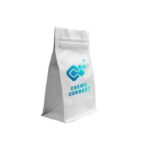ADB-BUTINACA, also known as MDMB-Butinaca or MDMB-BUTINACA, is a synthetic cannabinoid that belongs to the indazole carboxamide family. Due to its potent nature, it is classified as a high-affinity agonist for the cannabinoid receptors CB1 and CB2.
Chemical Structure:
ADB-B has a complex chemical structure, consisting of an indazole ring fused with a carboxamide group. This structure allows ADB-B to interact with the cannabinoid receptors in the human body.
Appearance: It is typically found as a white powder or in the form of small crystals.
Potency: This product is known for its high potency, with even small doses producing pronounced effects.
Effects and Potential Benefits of ADB-BUTINACA
Cannabinoid Receptor Affinity: It has a strong binding affinity for both CB1 and CB2 receptors in the endocannabinoid system, leading to potent agonist effects.
Psychoactive Effects: This product is reported to produce intense psychoactive effects similar to those of natural cannabinoids, such as euphoria, relaxation, altered perception, and increased sociability.
Duration of Effects: The duration of ADB-BUTINACA’s effects can vary but is generally reported to be relatively long-lasting, with effects lasting several hours.
Metabolism: This product is primarily metabolized in the liver, undergoing various metabolic processes before being eliminated from the body.
Research Potential: This product is primarily used in scientific research to study the effects of synthetic cannabinoids on the endocannabinoid system and to gain insights into their potential therapeutic applications.
Pharmacology and Effects:
As an agonist of the CB1 and CB2 receptors, ADB-B produces effects similar to those of natural cannabinoids like THC. The specific effects can vary depending on the dosage and individual tolerance.
Commonly reported effects of ADB-B include relaxation, euphoria, altered perception, increased sociability, and heightened sensory perception. However, it’s important to note that synthetic cannabinoids like ADB-B can also have unpredictable and potentially harmful effects, including anxiety, paranoia, hallucinations, and acute toxicity.
Health Risks and Safety:
The use of synthetic cannabinoids, including ADB-B, carries significant health risks. These substances are often sold as “legal highs” or “research chemicals,” but their safety profiles are not well understood. Synthetic cannabinoids can have a higher potency and different effects compared to natural cannabinoids, making them more unpredictable and potentially dangerous.
Reports of adverse effects associated with ADB-B use include cardiovascular problems, respiratory issues, kidney damage, and psychological disturbances. Long-term use of synthetic cannabinoids may also lead to dependence and withdrawal symptoms.






















Reviews
There are no reviews yet.